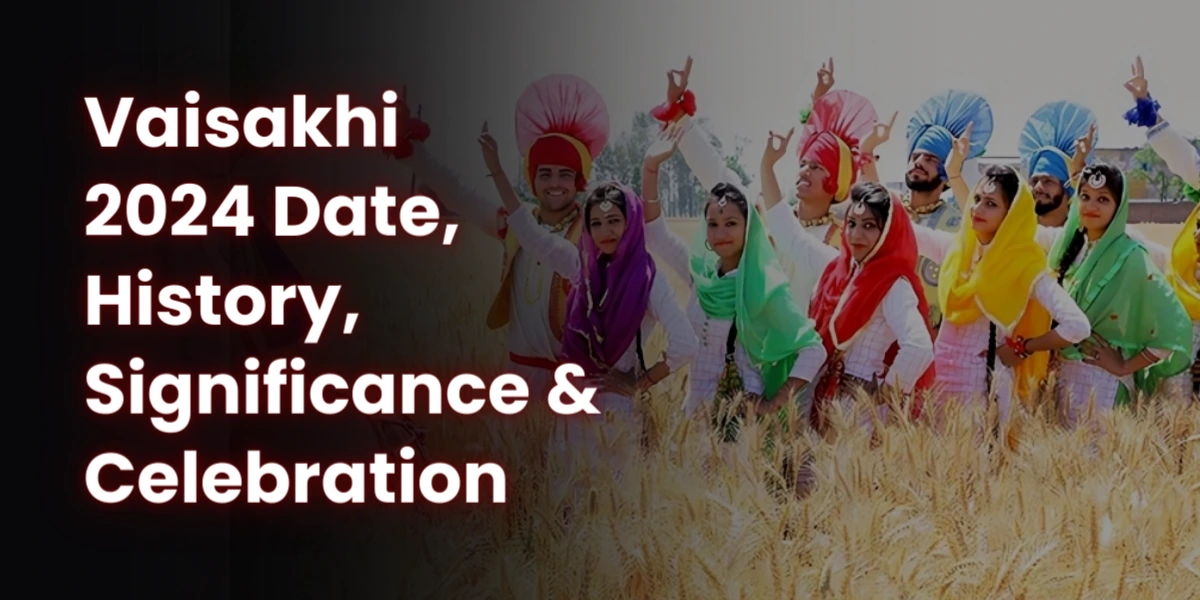Vaisakhi 2024 Date, History, Significance & Celebration
Vaisakhi 2024, the spring harvest festival, is known to all Indians, regardless of their faith. It is known by several different names across the nation: “Rongali Bihu” in Assam, “Naba Barsha” (First Rain) in West Bengal, “Vaishakha” in Bihar, “Vishu” in Kerala, and “Puthandu” in Tamil Nadu. Baisakhi is another name for it. This day is celebrated in Punjab as the birthday of Guru Gobind Singh, the tenth Sikh Guru, who also created “Khalsa” on this day.
Vaisakhi is celebrated by farmers as the start of the new harvest season, or “Vasanta.” Everywhere in the nation, Vaisakhi 2024 will be celebrated with great excitement and fervor on 13 April.
Vaisakhi 2024 date & time
Vaisakhi 2024 will be observed on Saturday, 13 April. The festival’s fortunate time will begin at 9:15 PM, one hour before Meshaa Sankranti.
The word “baisakhi” comes from the Hindu calendar month of Vaisakh. According to the Hindu calendar, the second month starts with the month of Chaitra and finishes with Falgun, also known as Fagun. At this time of year, farmers in the northern region of India have finished harvesting their crops for the season and are getting ready to plant new ones.
Also Read: https://ptrahulshastri.com/chaitra-navratri-2024-date-time-significant/
The Historical Significance of Vaisakhi
According to legend, on Vaisakhi, Guru Gobind Singh issued a challenge to any Sikh willing to forfeit their life. There were five volunteers out of the approximately one thousand individuals in attendance. The volunteers were christened with “Amrit” by the Guru, who chose not to murder them. This group of five saint-soldiers became known as the “Khalsa”. Known as the Five Ks, these five men stood in for the Khalsa and stood for Kesh (hair), Katchera (underwear), Kangha (comb), Kirpan (sword), and Kara (steel ring).
The showering of nectar, or “Amrit,” during the ceremonial baptization of Sikhs has become customary after that fatal day.
In addition to its historical significance, Punjabis commemorate this day with great fanfare as it signifies the maturing of the Rabi harvest.
On the other hand, Vaisakhi is celebrated lavishly in various Indian states and is recognized as New Year’s Day in Hinduism.
Vaisakhi 2024 Festival Celebration
To celebrate the festival, people sing, dance, and don new attire. They take pleasure in witnessing the parades that happen throughout this period. Men and women dance together. To commemorate the day, men do the Bangra form and women the Gidda form. People make desserts and holiday dinners to share. For Sikhs, who carry processions and commemorate the day with great fanaticism, it has been a memorable day. The northern Indian provinces of Haryana and Punjab celebrate Vaisakhi with great pomp and circumstance.
Sikhs get up early, take a wash, put on fresh clothes, and go to the closest gurudwara to offer special prayers. Everybody in attendance will receive kada prasad after the group prayer. They then consume langa, which is served to them by volunteers. In addition, fields, colleges, and schools commemorate the celebration. Schools will host some activities that day. The greatest locations to experience the true splendor of Vaisakhi are gurudwaras. To draw large crowds, they host Kirtanas which are fully adorned. Vaisakhi celebrations in 2024 are anticipated to be the same.
Rituals of Vaisakhi 2024
Sikhs will visit Gurdwaras during the Vaisakhi rituals in the morning to take part in a communal prayer. It is customary to bathe the Granth Sahib in milk. There will be sweets for everyone in attendance. It is during the afternoon that Sikhs will parade the Granth Sahib. The customs observed on Vaisakhi 2024 are as follows. The festival’s sword, the Kirpan; the uncut hair, the Kesh; the steel ring, the Kara; the comb, the Kangha; and the katchera are among its symbols.

